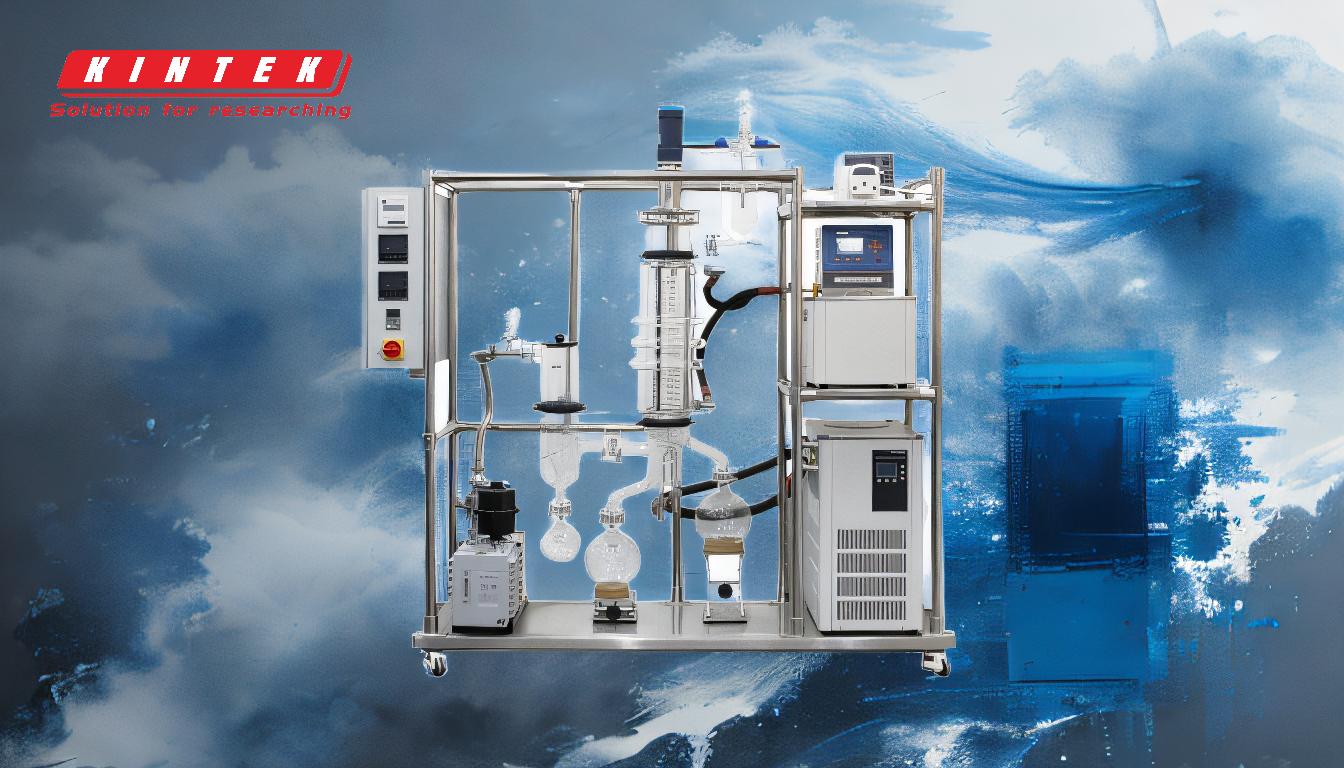Fractional distillation is a process used to separate components of a mixture based on their boiling points. It is widely used in industries such as petrochemicals, pharmaceuticals, and food processing. The three primary types of fractional distillation are simple fractional distillation, vacuum fractional distillation, and steam fractional distillation. Each type is suited for specific applications depending on the nature of the mixture and the desired purity of the components. Simple fractional distillation is used for mixtures with components that have significantly different boiling points, while vacuum fractional distillation is employed for heat-sensitive compounds. Steam fractional distillation is ideal for separating volatile organic compounds from non-volatile materials.
Key Points Explained:

-
Simple Fractional Distillation
- Definition: This is the most basic form of fractional distillation, where a mixture is heated, and the vapors are passed through a fractionating column to separate components based on their boiling points.
- Process: The mixture is heated in a distillation flask, and the vapors rise through the fractionating column. The column contains packing material or trays that provide a large surface area for condensation and re-evaporation, enhancing separation efficiency.
- Applications: Commonly used in laboratories and industries to separate liquids with boiling points that differ by at least 25°C. Examples include separating ethanol from water or purifying crude oil into its various fractions (e.g., gasoline, diesel).
- Advantages: Simple setup, cost-effective, and suitable for mixtures with distinct boiling points.
- Limitations: Not effective for mixtures with components that have very close boiling points.
-
Vacuum Fractional Distillation
- Definition: This type of fractional distillation is performed under reduced pressure, which lowers the boiling points of the components, making it suitable for heat-sensitive materials.
- Process: The distillation apparatus is connected to a vacuum pump, which reduces the pressure inside the system. This allows the mixture to boil at lower temperatures, minimizing thermal degradation of sensitive compounds.
- Applications: Widely used in the pharmaceutical and chemical industries to purify compounds that decompose at high temperatures. Examples include the distillation of essential oils, vitamins, and certain organic compounds.
- Advantages: Prevents thermal decomposition, allows separation of high-boiling-point compounds, and improves the purity of heat-sensitive products.
- Limitations: Requires specialized equipment and careful control of pressure, making it more complex and expensive than simple fractional distillation.
-
Steam Fractional Distillation
- Definition: This method uses steam to separate volatile components from non-volatile materials, often used in the extraction of essential oils and other natural products.
- Process: Steam is passed through the mixture, causing the volatile components to evaporate. The steam and vapors are then condensed and collected. The non-volatile materials remain in the distillation flask.
- Applications: Commonly used in the food and fragrance industries to extract essential oils from plants (e.g., lavender, peppermint) and in the petroleum industry to separate hydrocarbons.
- Advantages: Effective for separating volatile organic compounds from non-volatile materials, gentle on heat-sensitive compounds, and scalable for industrial use.
- Limitations: Requires a continuous supply of steam, which can be energy-intensive, and is less effective for mixtures with components that have similar volatilities.
By understanding these three types of fractional distillation, equipment and consumable purchasers can make informed decisions about which method and associated apparatus are best suited for their specific applications. Each type offers unique advantages and limitations, making it essential to consider factors such as the nature of the mixture, desired purity, and operational constraints when selecting a distillation method.
Summary Table:
| Type | Definition | Applications | Advantages | Limitations |
|---|---|---|---|---|
| Simple Fractional | Separates components with significantly different boiling points. | Labs, ethanol-water separation, crude oil purification. | Simple setup, cost-effective, suitable for distinct boiling points. | Ineffective for mixtures with very close boiling points. |
| Vacuum Fractional | Performed under reduced pressure for heat-sensitive materials. | Pharmaceuticals, essential oils, vitamins. | Prevents thermal decomposition, purifies high-boiling-point compounds. | Requires specialized equipment, more complex and expensive. |
| Steam Fractional | Uses steam to separate volatile compounds from non-volatile materials. | Food, fragrance, and petroleum industries. | Gentle on heat-sensitive compounds, scalable for industrial use. | Energy-intensive, less effective for mixtures with similar volatilities. |
Need help selecting the right fractional distillation method for your application? Contact our experts today!










